I’ve been having difficulty getting this report off the ground. A Roland System-8 has been standing around here in my studio for months at less than arm’s length, intimidating me with its very presence.
There was no way I was going to feel motivated to really and actually examine the thing. A couple of pics here, a couple of sound samples there. Then, dispair. Enough of those fleeting impressions, enough lighting orgies. What followed was the firm intention to just chuck it … not chuck it … chuck it … not chuck it.
This went on for a long time. From today’s point of view, this is about more than just the System-8. The paralysis stems from deeper down. It has to do with the unequivocal turning point the Roland Company has taken. A turning point that the tried-and-true synthesizer enthusiast (and Roland fan of many years) has difficulty just coping with. But the world keeps turning, and so we accept things as they now are.
New Products — Re-orientation — A new set of Values
Occasional Roland products have given cause for thoughtful frowns for some time now. And it is doubtful that company founder Ikutaro Kakehashi would have approved of present company philosophy. Overworked SH- and Jupiter-clones clothed in digitalia, bright TB-303 imitations, chic little plastic synths, lightweight turntables with a 909-logo. Where to put it all? In a professional studio?
Part of the problem has nothing to do with Roland, of course, but with the heightened expectations of the users. For many musicians, Roland and musical life are two sides of the same self-minted coin — accountable for the characteristic sounds of whole bands and entire generations.
Up to a few years ago, unique accoustical behaviour conveyed the (former) Roland rock-bottom concept of always giving the artist the very best. Juno-60, Jupiter-4, Jupiter-6, Jupiter-8 … SH-5, SH-7, VP-330 Vocoder and the great Modular-Synthesizer Systems 100, 100M und System 700: every one a posh instrument, every one Crème de la Crème. And even the small Roland analog aynths — as for instance the SH-2 and the cute SH-09 — are of exceptional musical and constructional quality (underlined by the fact that a lot of them are still doing good service today). Later digital classics like the Roland D-50, D-70, JD-800, JP-8000 or V-Synth – all the way up to the Jupiter-80 – round off the generally positive picture of the noble synth smithy from Japan.
So, in the face of such a glorious past, how are we now to cope with that new Roland generation of lightweight plastic instruments made in China? Inscrutable static coming out of nowhere, inexplainable chirps and clicks. By all due respect: The SOUND simply isn’t what it once was. It’s maybe OK, but it isn’t what the purist is looking for. And it isn’t what it was. Rather MID-Fi than HI-FI. And even when casting a mild eye at modern construction compromises (external power supply, plastic chassis, …), SOUND should not be compromised on.
Changing one’s point of view
Now, casting woeful eyes back into the past and making comparisons with the present is one thing. Reclassifying mental priorities is another. Then again, we have to be fair: The Roland System-8 is a relatively inexpensive Instrument, and it can do a lot. Which in these digital times is admittedly not the great challenge. The System-8 is a well-rounded package deal: arpeggiator, sequencer, Plug-Outs for even more synth-sounds, a variety of details for sound designers, customer-friendly optics and robust control elements.
We’ll get back to some special features and a couple of quirks later on …
The Roland System-8
features a:
- classic (analog) signal path
– OSC 1 / 2 / 3 / noise
– mixer
– filter (multimode)
– amplifier
– LFOs
–
– filter-envelope (ADSR)
– amplifier-envelope (ADSR)
– pitch-envelope (AD)
– - a maximum of 8 voices
- Plug-Out 1 / 2 / 3
- 64 patches and 64 performances
- a comprehensive effect-section (3 effect paths)
- arpeggiator, step-sequencer and vocoder
- 4-octave keyboard
Now, this is all very impressive. In addition, there are some little goodies to be found among the ports, especially for the analog-synth enthusiasts among you.
- Audio out R/L
- Audio in R/L (for connecting a mic, rhythm device or external synth)
- Trigger in (for control of the internal step-sequencer via an external analog signal)
- CV/Gate OUT (for control of an external OCT/V analog synthesizer – System 1M, e.g.)
- PEDAL and CONTROL jack
- MIDI (IN/OUT) and USB
An SD-card-slip enables the creation of simple back-ups. That is of course very practial and would seem to be a fast (and secure) solution for archiving data, seen in the light of the great sound diversity available on the System-8.
Sound-design in detail
Refined details of the sound architecture are what make the System-8 stand out. Filter resonance, for example, is rich in overtones — to a certain degree a real accomplishment for a device with analog character, even if it is just, in fact, the emulation of a voltage controlled filter. “Variations” give you just that, technically or sound-wise, in connection with oscillators, filters and the LFO.
Further mention deserve the following:
- cross-modulation
- ring modulator
- (oscillator) synchronization
- pitch envelope
Above and beyond this, the extensive performance sector is the second mainstay of the System-8. Among the expression and playing enhancements:
- various key modes (MONO / UNISON / POLY)
- portamento
- chord memory
- velocity as well as the specifically dedicated Velocity OFF switch (in order, for instance, to come closer to the characteristics of the Jupiter-8 / Juno-106)
- octave Up / Down (which is – admittedly – absolutely necessary, when considering the reduced keyboard)
- a comprehensive bender section
- arpeggiator and sequencer
- vocoder
The bender section is astounding. The combined pitchbend-modulation lever is typical of Roland and nothing new, of course. Praise where praise is due: the bender is extremely stable and lies well in the hand. But it’s interesting: not all performance results are close to what you’d expect. To be specific: filter frequency bending is just too gentle, even at maximum settings (bender/FILTER slider all the way up – max. range of 255). The desired “filter sweeps” are fairly tame, not even close to any sort of dramatic change in sound, whereas most users are looking for at least twice or three times that effect. Anyway, that’s what benders are designed to do: both subtle AND dramatic changes in sound.
Along with all the surprises, something to get used to: by a change of sound, the settings in the bender section get “lost”. Which can be seen as an advantage or a disadvantage. Let’s look back to the Jupiter-8. Its pre-set sliders and switches in the bender area (VCO at “exactly” one octave, VCF at maximum, or whatever) at the left side of the keyboard remain continuously available until changed by the user. Which has the advantage that (the pre-set) bender-performance remains available, regardless of what sound changes are made. Pre-set is pre-set, so to speak. The disadvantage: the settings for the said performance are permanent and therefore “not” a component of the archived sound (logically making an individual bender-performance per sound impossible).
Now, with the System-8 it’s the exact opposite: the pre-set controls of the bender-area (which you’re LOOKING at, so to speak) reflect in no way the actual bender-performance which has been saved along with the sound. So our question: what’s to be preferred? A permanent pre-set (always available, but not savable) … or individual settings sound-per-sound (which may require constant correction of the faders, since their settings are not permanent)?
The more modern system (that of the System-8) may give you greater flexibility, since the required bender/modulations-lever-settings will probably vary from sound to sound. What you lose, though, is spontaneity. If you’re looking to use the bender for filter movements — jollyily switching here and there through the sound programmes, for instance —, you’re going to find yourself having to constantly “correct” the slider settings in the bender area (or, alternatively, to save the identical performance for all the sounds). That means putting in a lot of extra work …
Analog Circuit Behaviour, or: on the quality of the sounds
“Powerful and deep, the SYSTEM-8 delivers a vast palette of sounds inspired by over four decades of legendary Roland synths. Its next-gen Analog Circuit Behavior (ACB) engine powers an eight-voice, three-oscillator monster with stunning filters and effects, highly versatile LFOs, and a massive array of high-resolution knobs and sliders to control it all. Support for three PLUG-OUT synths means the SYSTEM-8 can host spot-on recreations of numerous Roland classics, and JUPITER-8 and JUNO-106 PLUG-OUTS are even included with purchase. Split and layer synths for unheard of sounds, and tap into the integrated vocoder, arpeggiator, CV/Gate outs, and advanced polyphonic step sequencer to fuel endless creative explorations.”
(source: Roland.com)
So much for publicity. Whether that engine is now called an ACB or something else won’t really make a big impression on musicians, but the essence of what System-8 now stands for is visible here: a quailty emulation of analog sound synthesis. Nobody, but nobody believes that the System-8 is meant to replace the Jupiter-8. Or the Juno-106.
It’s not as easy as all that. And be assured, some of those sounds (we can only make comparisons on the basis of our test candidate, the Jupiter-8 Plug-Out) were NEVER to be found on the original instrument. But then, that’s not the point: to be fair, many of the System-8 sounds appear to be really useful. They inspire the player, in their own way, to make music (creatively). Which is one very good argument in favor of a modern instrument.
Anyway, audio purists might discover some noise in the System-8 signal path, along with some (inexplicable) “ticks” or drop-outs (listen to soundfile Electric Piano and you’ll know what we’re talkig about).
Special Assets and a couple of Question Marks
Now, stepping aside from all the sound details and conceptual extraordinaries, we reach the following fundamental insight: the System-8 helps keep the good tradition of analog synthesis (here: virtual analog) alive.
The next generation of musicians has the enjoyment of twisting and adjusting on instruments that follow the classical, tried-and-true structure of OSC-MIXER-FILTER and AMP. Or of turning knobs, discovering the influence of a ring modulator on the interaction of the oscillators and exploring the effects of cross-modulation. That in itself is a very good thing. And should that nest-egg someday be big enough to fulfill the dream of a Jupiter-8, then the System-8 user will already be familiar with the Jupiter’s basic sound architecture. So far so very good.
In addition, the System-8 has ist own very useful, musically effective basic sound. A battery of presets is at your fingertips and the Plug-Outs do their own stuff, of course, to widen your musical horizon. Which means the System-8 is a very useful and sensible choice as a sound-designer-synth. Its strengths lie — just one opinion among many, I know — in the experimental field and in the area of soundscapes and specially-colored solo sounds.
Last, but not least: the System-8 is an impressive performance synth. Arpeggiator, step-sequencer (with analog trigger-in), a comprehensive effect section, vocoder, CV/gate output, MIDI, USB, etc. This is a serious all-round instrument, prepared for lots of different sound-engine/synth-gear constellations in your home studio. No room for complaints here. (Well, ah, yes … we would have wished a dedicated MIDI THRU socket, if somebody had asked.)
And now a few questions. Why are Roland devices standardly equipped with that light-weight (plastic) hardware these days? Then again, there’s that painfully short 4-octave keyboard, the shoddy external power supply (also to be found with the Roland JD-XA) and that penetrating green-lighting. You can’t even read the panel graphics if it’s really dark.
Other questions along the way: why does the oscillator COARSE TUNE range end at 11 (semi) tones? Sure, it IS possible to reach that last half tone by the FINE tune knob, but that means two work steps instead of one. Why not COARSE TUNE “12” from the very beginning? Which would also enable manual gliding from one octave to the next, a must-have in terms of sound-design.
Our final question involves that ominous user’s manual. It should be called “The Pursuit Of Unhappiness” (with a bow to Paul Watzlawick’s famous book). Extra-thin paper, horrible black-and-white illustrations, endless lists and tables. Not a single friendly word in the direction of creative music making, and then – last but not least – that friendly green blinking all over the instrument. No in-depth information, unless you want to download a PDF they were kind enough to provide as an afterthought. But that’s how things are.
Short and to the point
Roland veterans probably won’t break out in a dance of joy when they meet the Roland System-8. A true classic would have better hardware (heavy and stable chassis, internal power supply, 5- to 6-octave keyboard) and would put more polyphony at your fingertips (at least 16 voices should be possible in this digital age). On the other hand, those same veterans already have a Juno-60, a Juno-106 or even a Jupiter-8, meaning they are in no way dependent on the System-8 for analog synth sounds in any way.
Which brings us to the target group of today: the modern smartphone-generation, those guys with a limited budget and a weakness for blinking lights. The System-8 will offer them proper sounds, some of which even have their own characteristics, pretty, green-light orgies and – a very fair price. Its comprehensive performance department finally qualifies this instrument as an extremely useful VA-synthesizer, one that could have come from almost any producer, and which just happens to sport that glorious ROLAND logo.
In the end, System-8 finds itself in the good tradition of analog signal paths and analog user surfaces. A real advantage, which raises hopes that Roland will one day produce a real new polyphonic analog synthesizer, based on its own classic, tried-and-true structure, a synth with all the excellence that goes into a true PRO instrument.
Possible alternatives?
There are several alternatives to the System-8 available for about 1500 Euros:
- Novation PEAK (8-voice rack-synthesizer with arpeggiator)
Price: approx. 1400 Euros - DSI Prophet Rev. 2-8 (8-voice synthesizer with step-sequencer)
Price: approx. 1650 Euros - Behringer Deep Mind 12 (12-voice analog synthesizer with step-sequencer)
Price: approx. 1200 Euros
Soundfiles
90% of the soundfiles were made exclusively with the System-8. The first example is very special, because it bridges 40 years of Roland history (feating System-700, Jupiter-8 and System-8).
x
Many of the System-8 audiofiles demonstrate its impressive sound capital and its special sound character, especially in connection with those internal effects (delay, chorus, etc.). We have abstained from using MIDI and any external (computer) control.
Roland System-8
Polyphonic Digital Synthesizer
8 Voices
Price: approx. 1,750 USD / 1,520 Euros
(05/2023)
Website Manufacturer:
www.roland.com
Open / Download:
Roland System-8 Photo (3600 x 2400 px)
Link / Comparison:
Roland JD-XA Review
Roland Jupiter-X Review

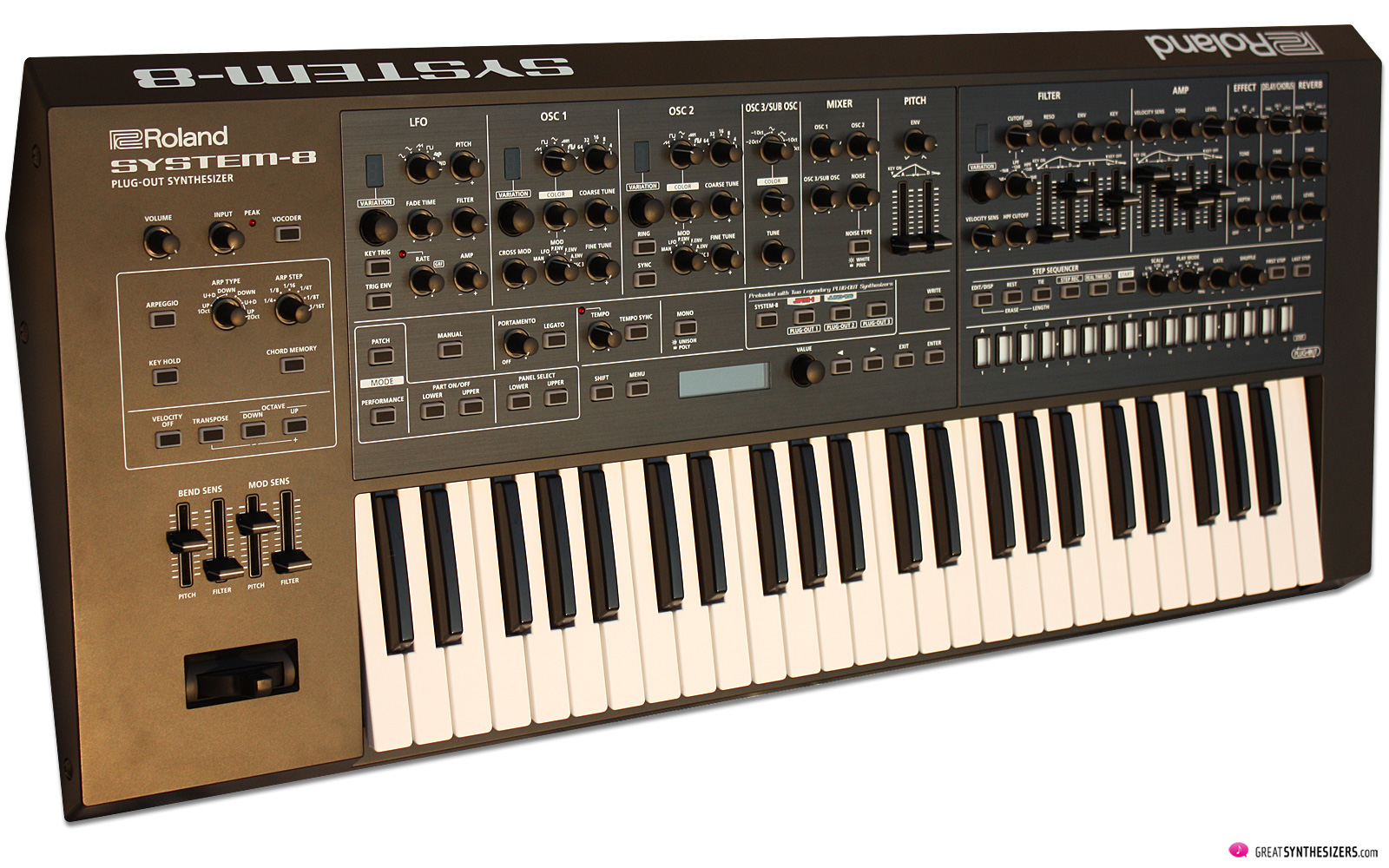


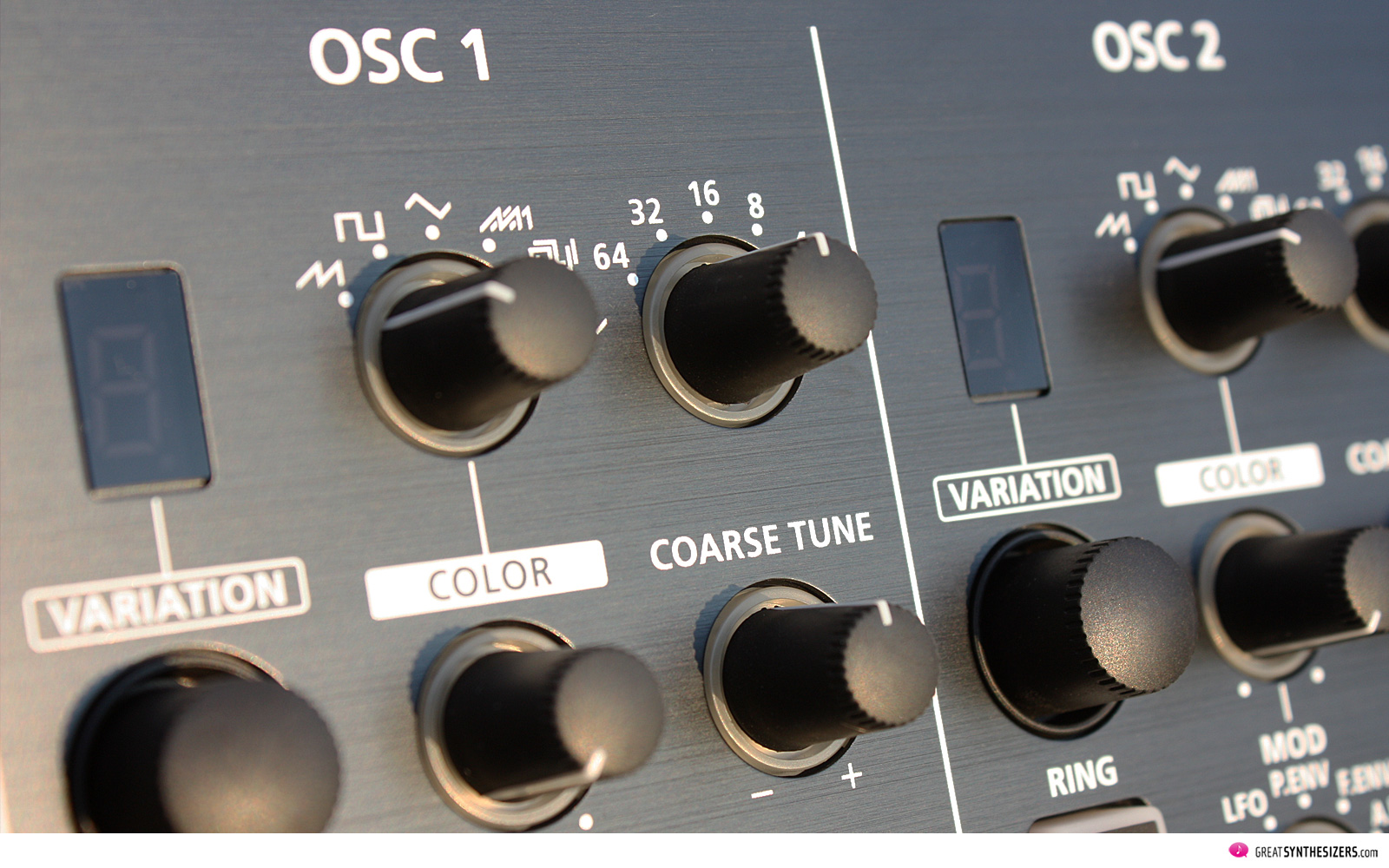
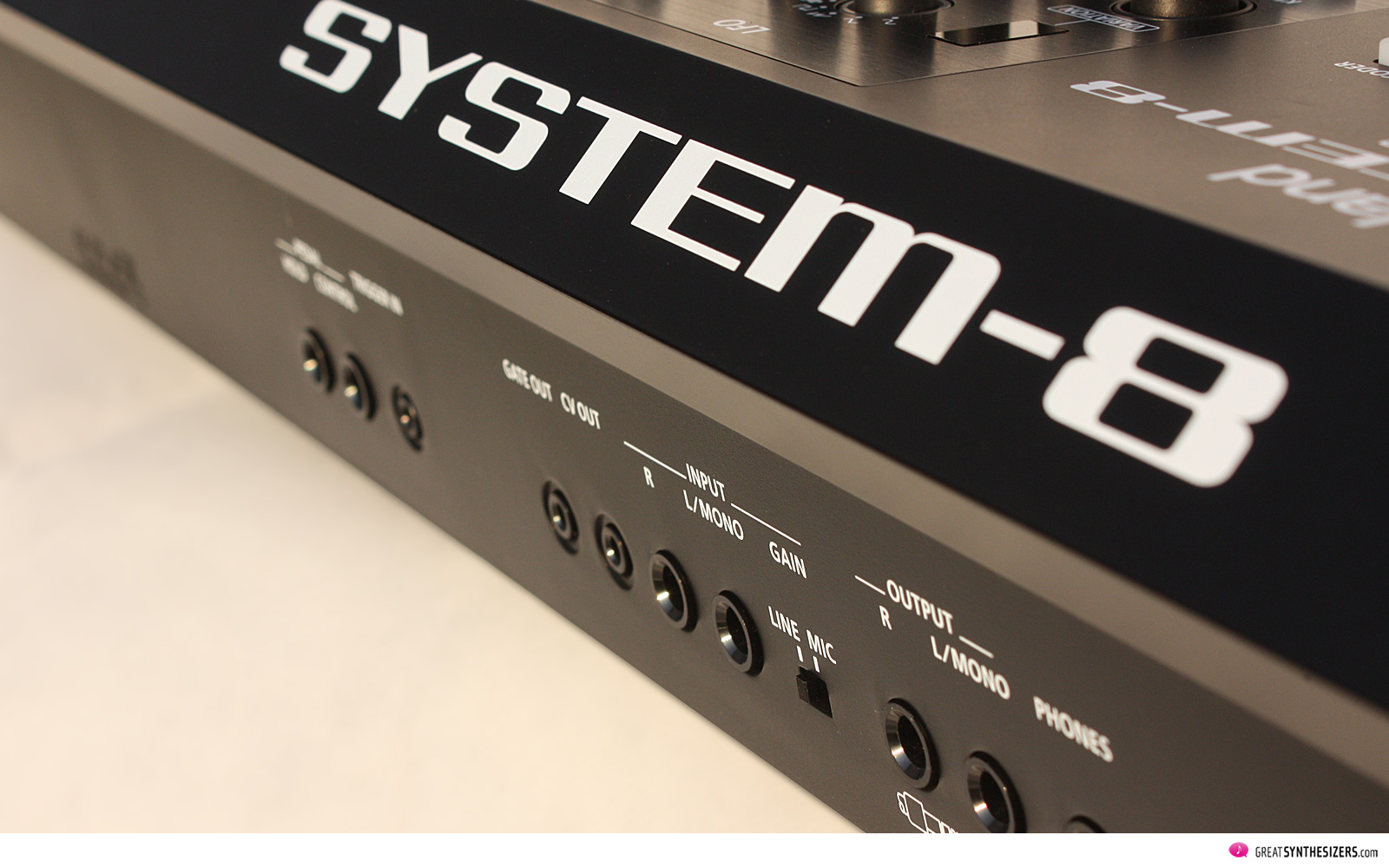
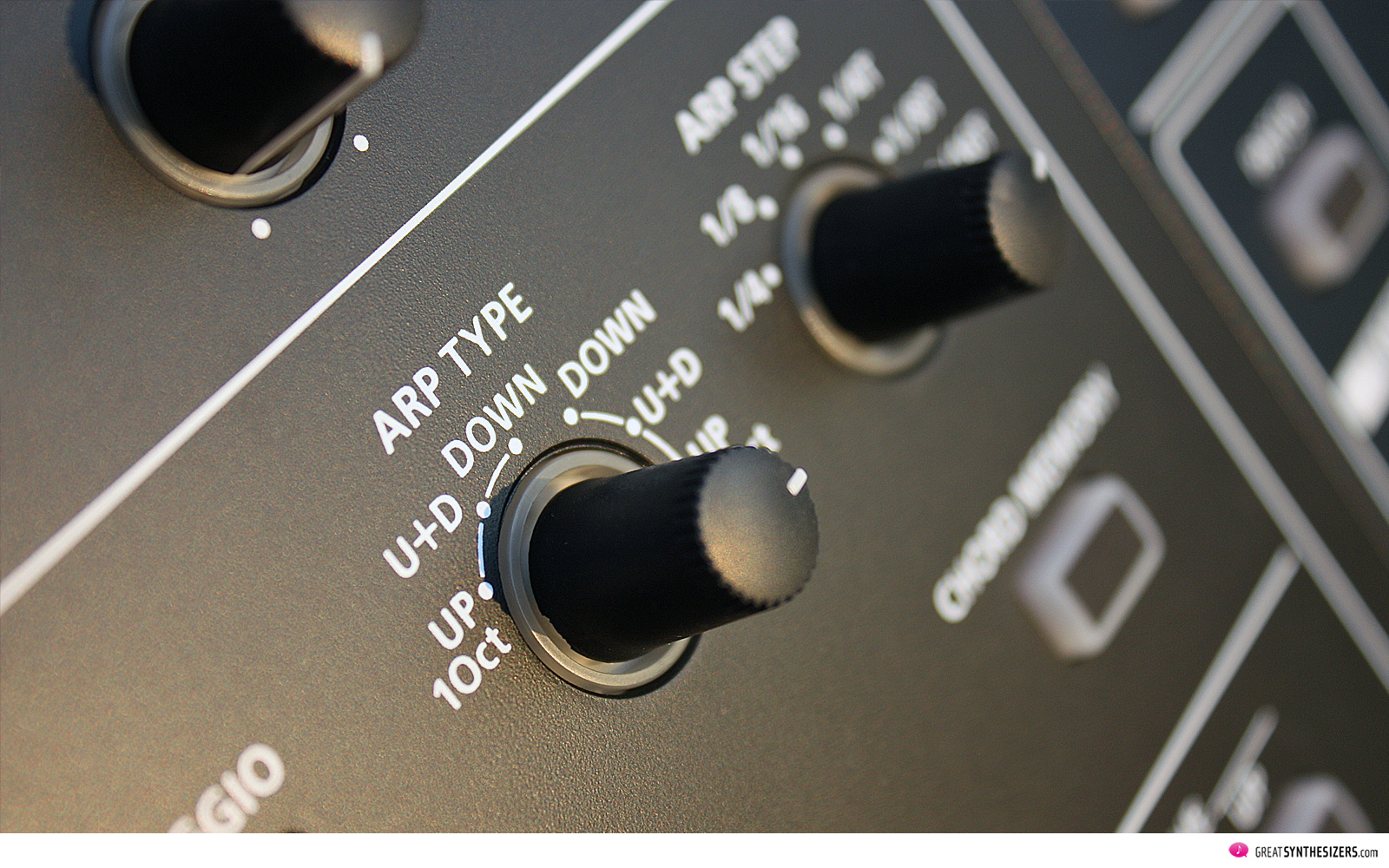
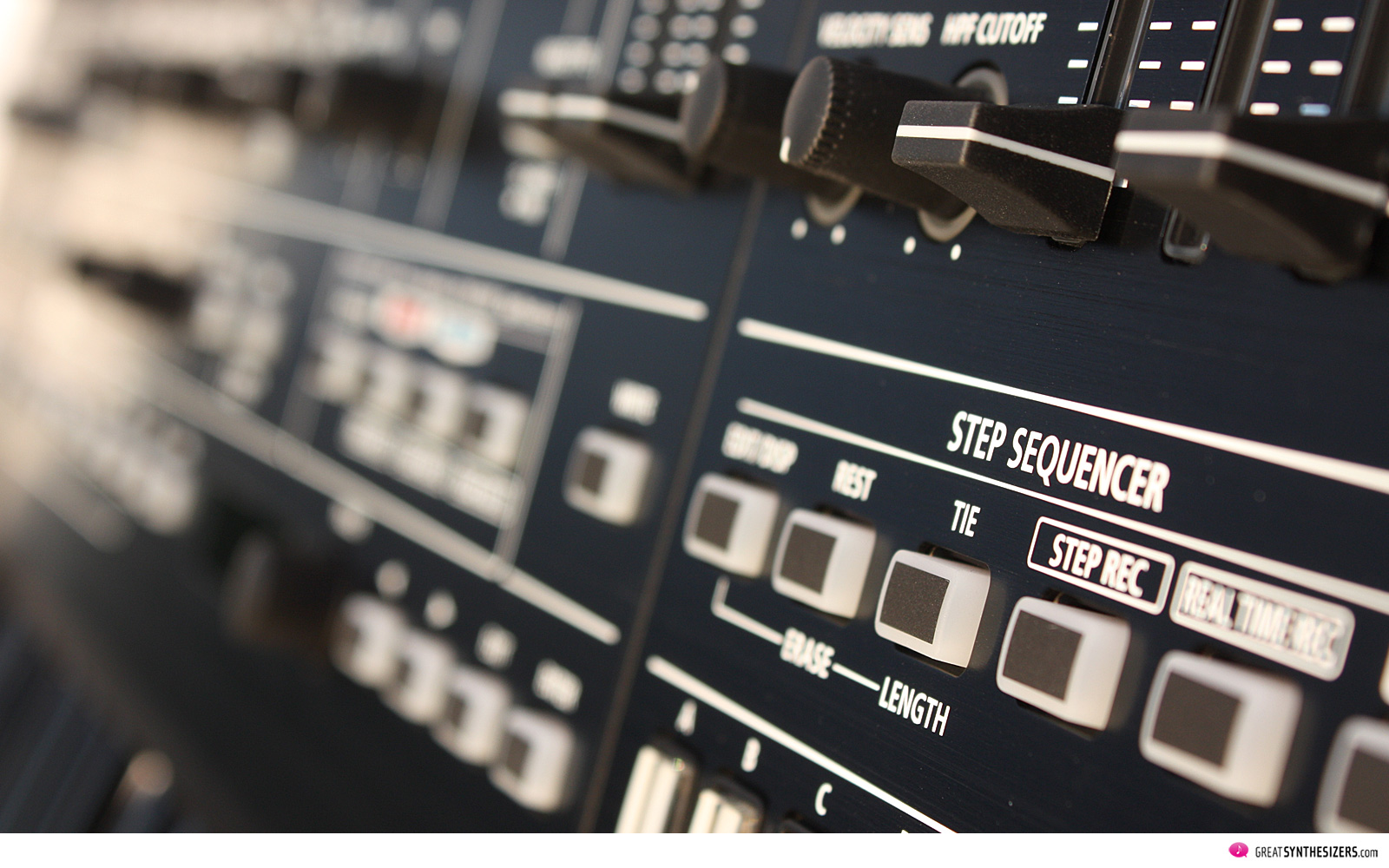
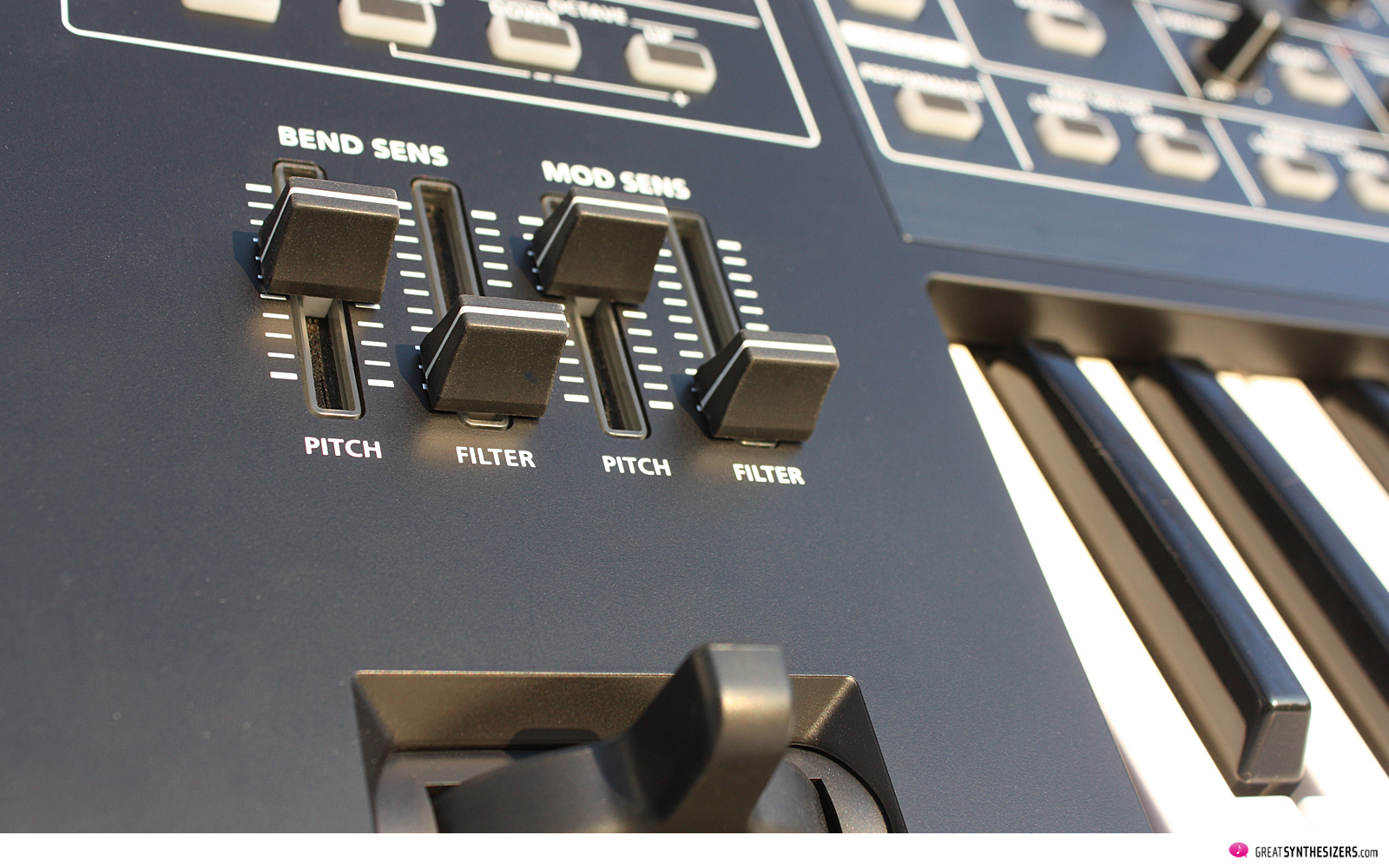
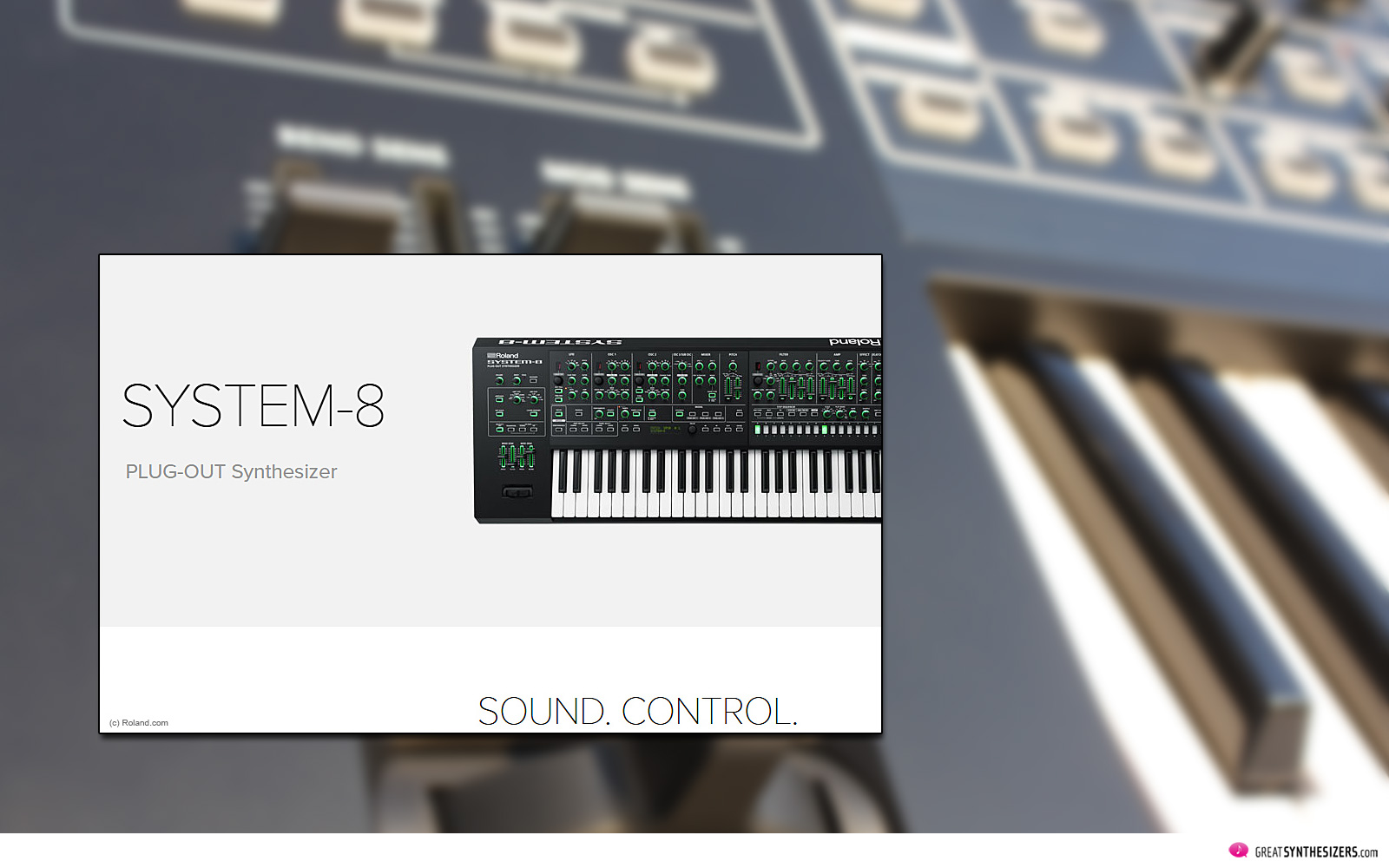
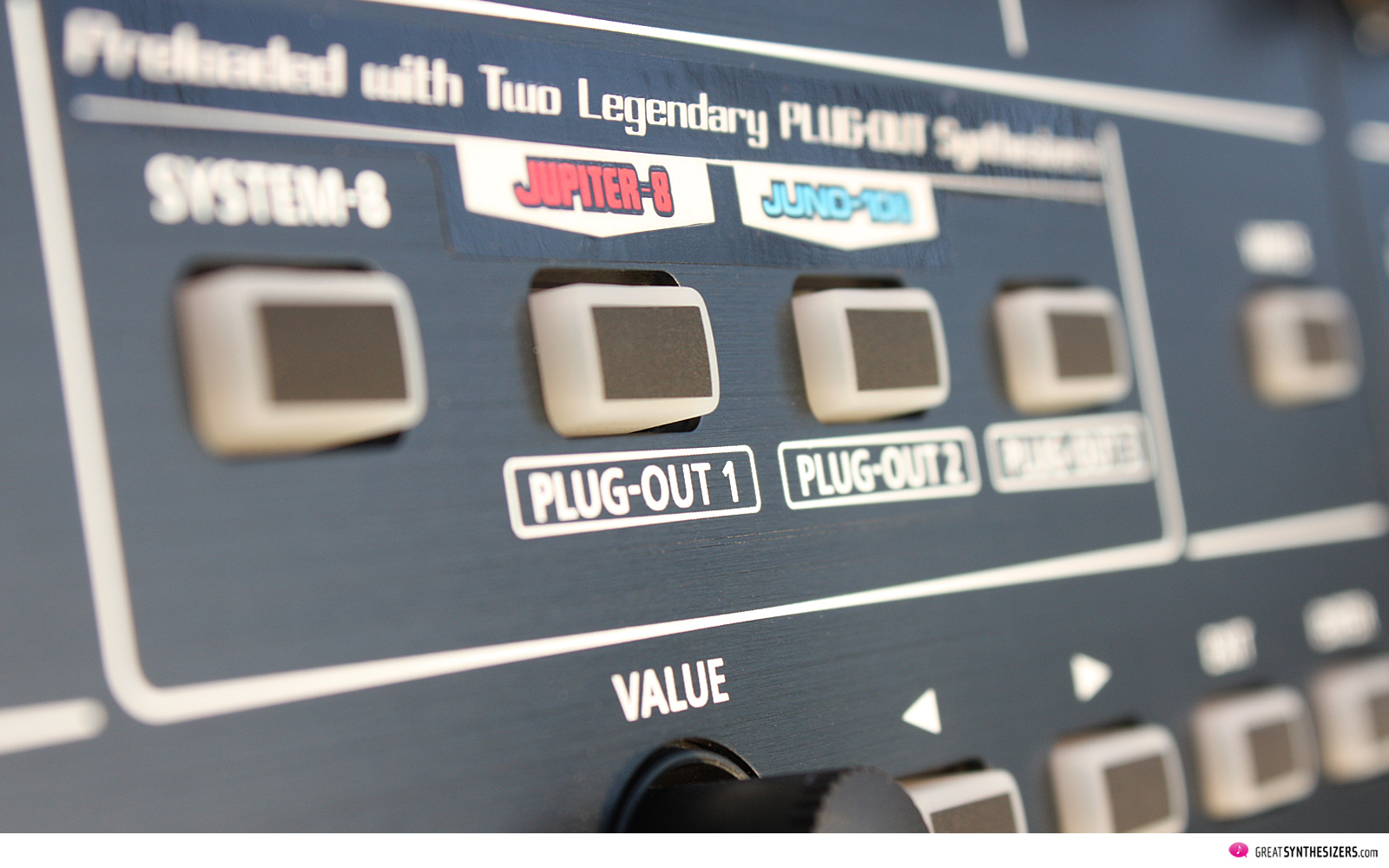
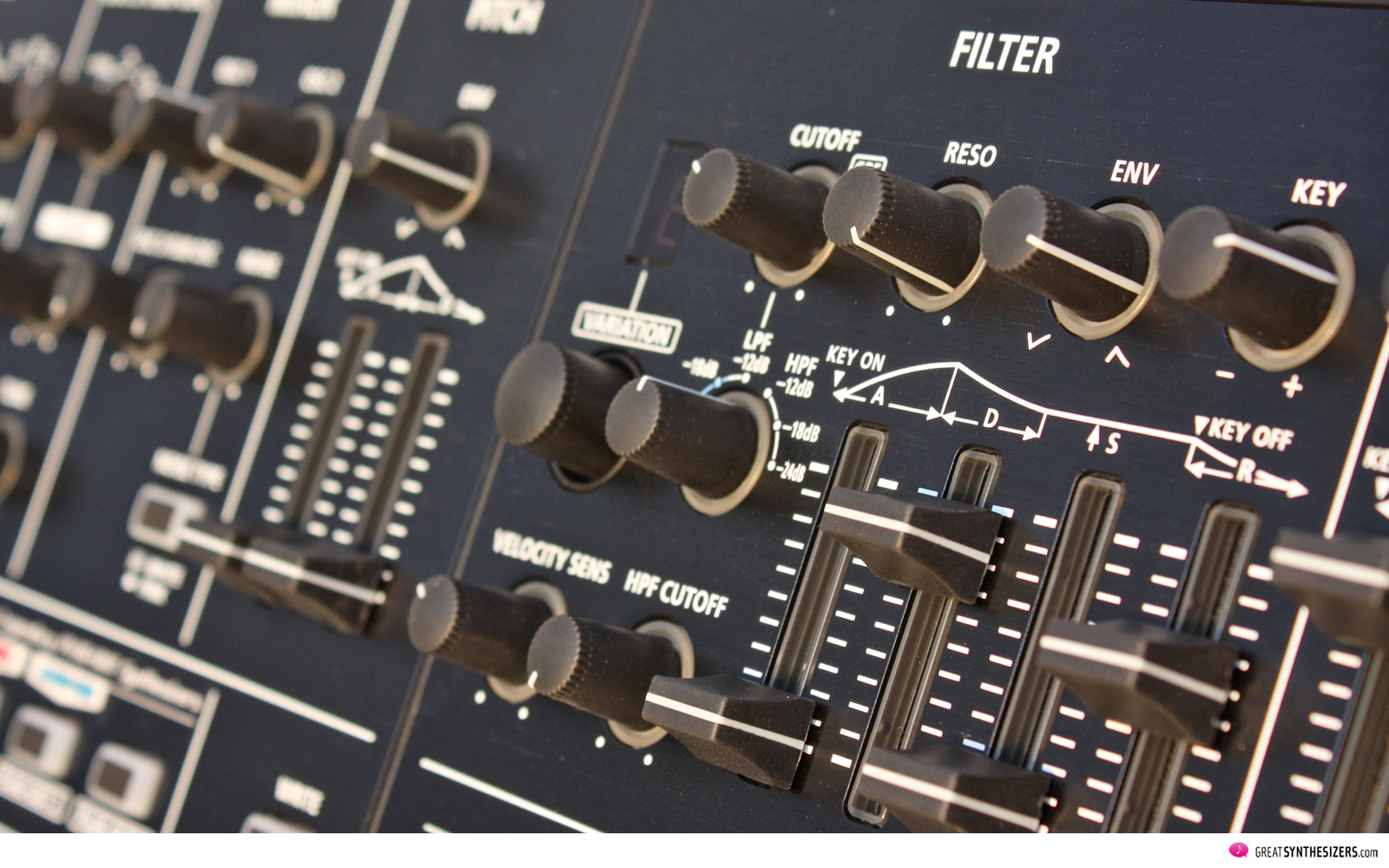
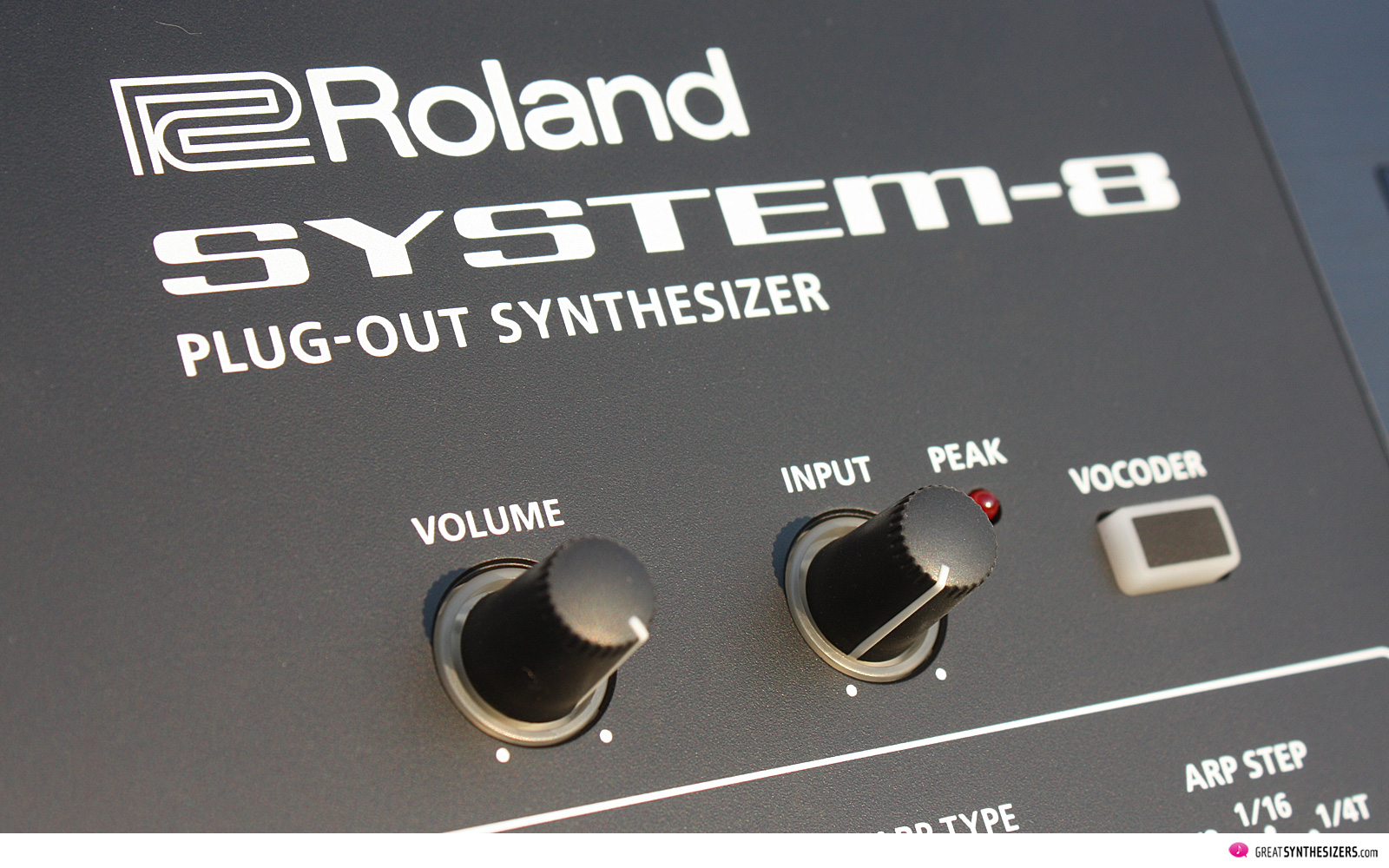

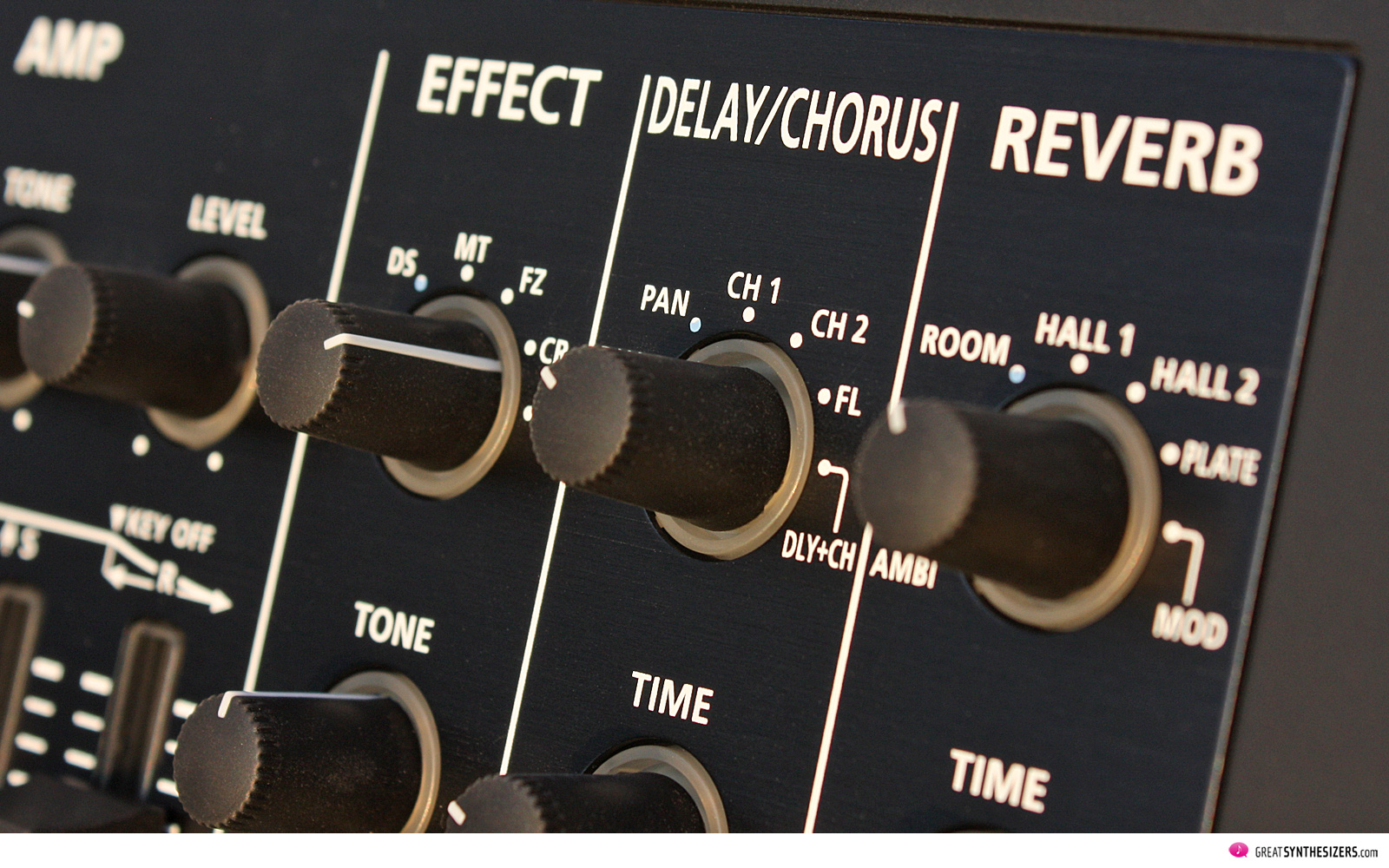
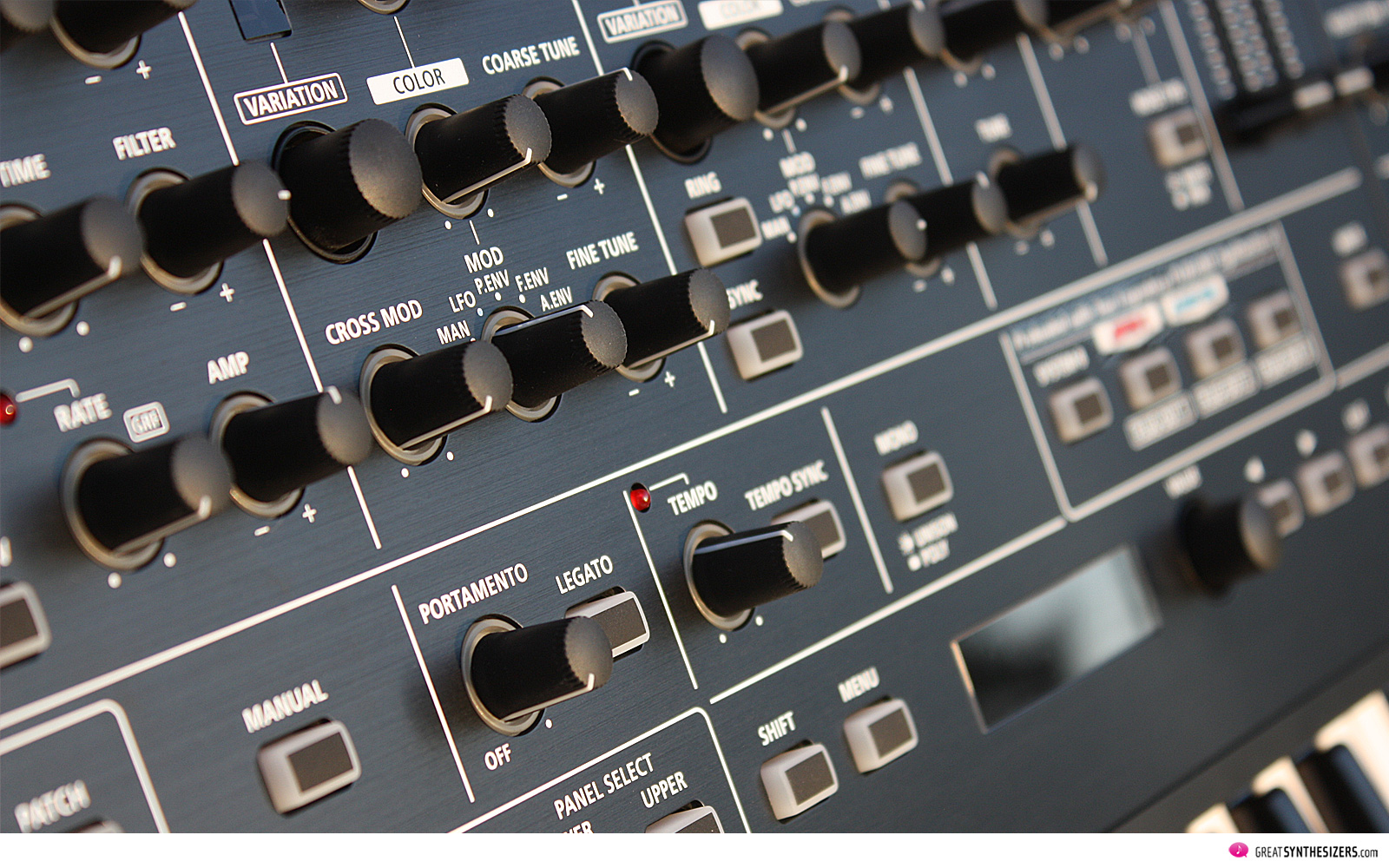
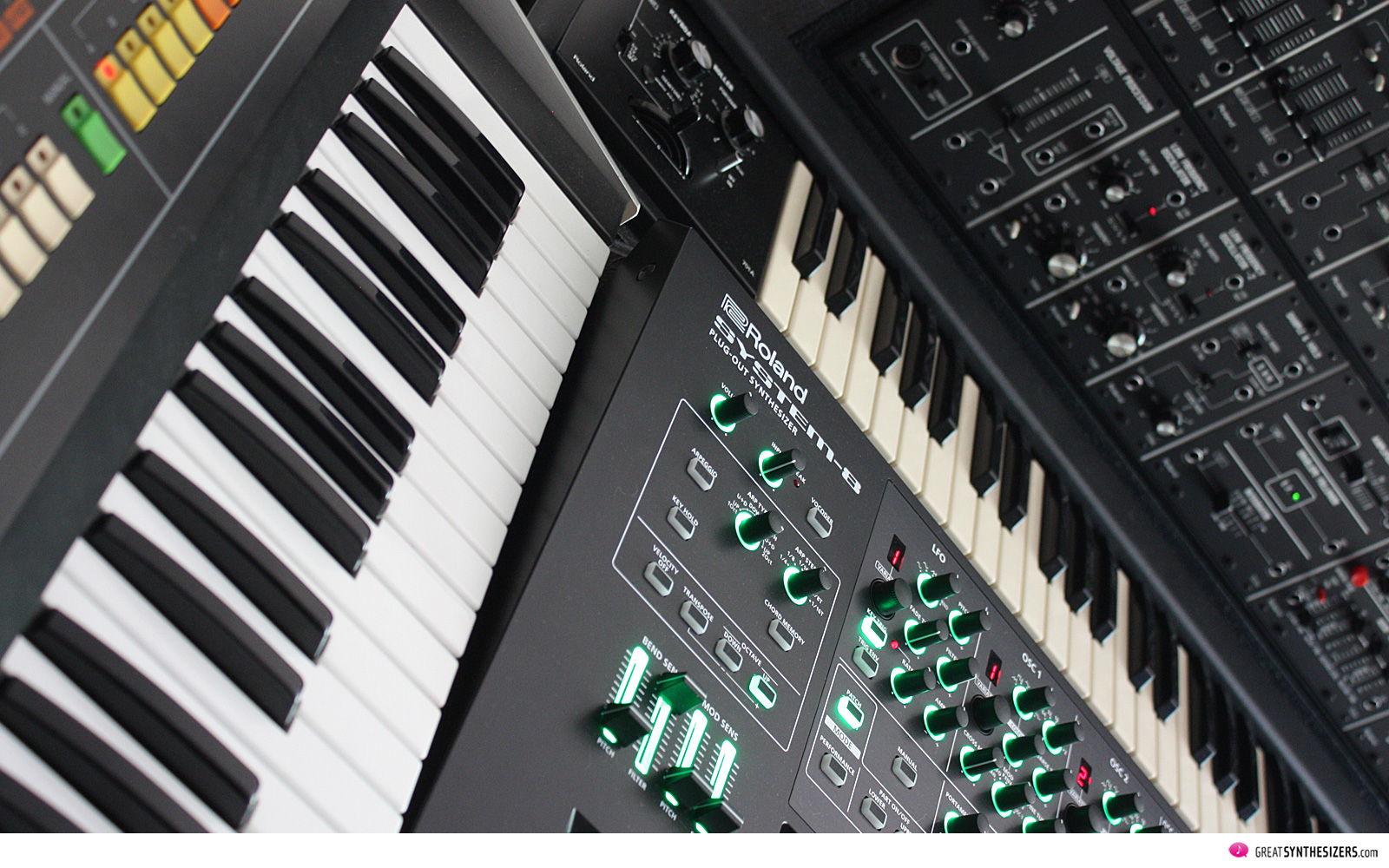

Hello! Thank you for the review..
Could I ask you about a minor detail?.. How the keybord feels? I wonder if the quality of keyboard action is acceptable or not. Is it a nice instrument to play?
Hi Denis! The keyboard action is not bad – soft, smooth keys, acceptable so far. Nice to play (and to perform) thanks to the quality keys, knobs, sliders and switches.
Nevertheless, I think it’s a pitty that there are cost saving details to be found “everywhere”. The keys are shortened (as we already noticed with the JD-XA), 1cm less in length. Some people don’t care, they don’t feel bothered at all. I always hit the panel when playing the System-8 (especially when playing the black keys). Shortened keys is another detail that “possibly” reduces the joy of playing the instrument.
Overall sound is good, though. All in all, I’d say the price / performance ratio of the System-8 is quite fair.
Thank you once again!
I am looking forward to buying it, but I can’t test it. Your comments are really helpfull!
reminds me of my Z1… nice tho i’m not sure it’s groundbreaking still. Glad to see the style is alive at very least :)
Hi Theo,
Love your reviewing style…two questions:
– Is that on-board sequencer capable of programming polyphonically (e.g. chords)?
– Can the sequencer also send similar ‘poly’ messages to external devices via MIDI?
Thanks in advance! :)
… oh, I have to figure that out. Will be back in a few days … Cheers …
Mostly curious is that sequencer can send POLY messages to external MIDI gear.
Anyway, great, let me know! Thanks!
I got one and the thing sounds unbelievably great. I can’t say if the Jupiter-8 simulation is spot on, but the Juno-106 sounds just perfect and with the last update so many new possibilities have been added to the System-8 engine, it’s a steal to get this for 900€ nearly unused, because so many are on the NOT TRUE ANALOG trip.
Ive got a jupiter 6, 8 and a juno 106 never had the jx3p though, but what i will say is the system 8 sounds so close to my jupiter 8 and has some of its mojo, so much so it doesnt make me think its a poor mans jupiter 8, or that its not analog, for me its indistinguishable in comparison when your mixing down a track and its a delight to play which is the biggest key to a synth for me, its playability is the key.
I have a Super JX10 which sounds really good, but its not got the playability factor like the system 8, so that makes it a big win over the JX.
Im a huge fan of the system 8 and i was one of those people who stood on my ivory tower for years smirking at those mere mortals who could never attain a big poly like a prophet 5, oberheim or roland jp8. It was something only attainable to the few, and now its available to the many and im really glad about that.
I’ve had a number Jupiters and junos come into my possession over the past 25 years and have noted that they all sounded slightly different, some better than others, so that must not be forgotten about either, two analogs of the same model do not sound the same after nearly 40 years, and i happen to think thats why some jupiter owners like the system 8 more than other jupiter owners.
Anyway, Roland went through a bad patch for nearly 2 decades, making some really average products, namely DJ based stuff, but they redeemed themselves with the system 8.
Long live roland… back on the right path…
“Which brings us to the target group of today: the modern smartphone-generation, those guys with a limited budget and a weakness for blinking lights. The System-8 will offer them proper sounds, some of which even have their own characteristics, pretty, green-light orgies and – a very fair price. Its comprehensive performance department finally qualifies this instrument as an extremely useful VA-synthesizer, one that could have come from almost any producer, and which just happens to sport that glorious ROLAND logo.”
The first problem is where are your statistics? Do you even know this generation you are stigmatizing? How many of them care only about “blinking lights”? Do you know why they have a limited budget? I would bet $20 that if you ran a proper scientific survey on your demographic with synthesizers, you’d be surprised. I would bet that this generation you’re judging is now the majority.
The second problem here, sir, is that you have just stereotyped and stigmatized an entire swath of people. Do you want the heart of the synth purist to continue after all those who were into Roland from the 70s to the 90s to continue? Then instead of stigmatizing people, maybe you should teach them what the heart and soul of synthesizer performance is. Maybe you should communicate that to them in a way that teaches them so that the generation that comes after cherishes analog synthesizers with lots of performance based interfaces like knobs and sliders. Instead, you’re only hurting yourself.
I’ve taken courses on leading millenials and other generations. I’m going to just come out and say it: clearly you don’t know how to communicate to those generations you’re stigmatizing.
I know that you’re probably referencing some sort of mental stereotype where the alternative is the newbie who just grabs a free DAW, free plugin VSTs, a cheap MIDI keyboard, and just picks presets to use in their songs. You probably respect creativity and spontinaity, like I do. Let’s assume for a second that this 2nd stereotype is valid: is stigmatizing this generation for not being like you, or like you think they should be, going to make them more likely to listen to you, or less likely?
Don’t be a jerk.
As for me, I’m a Gen Xer who’s been using Boss and Roland all my life. I am a recent convert to Roland and synthesizers, but in no way new to analog. But it’s not about me.
… hello Robert,
thanks for your comment. I hope I’m “not” judging any synth purist’s heart – neither of the vintage synth generation, nor of the modern / young musician’s generation. If so, then I apologize for it. The System-8’s blinking lights are not the problem, of course. But there are other aspects that are hardly acceptable: external PSU (such a small connector is always in danger of being damaged), a 4-octave keyboard (which limits the audio range “directly” accessible to your fingers), light-plastic chassis, and a few other things. Anyway, the synth architectures is comprehensive, the System-8 sound is good … and the price is correct.
After all, there’s a classy Roland synthesizer in prospect right now: The Jupiter-X. Proper hardware, 5-octave keyboard, internal PSU, etc. Really looking forward to it …
Once more, as for the Roland System-8: It is an instrument in it’s own right.
Regards,
Theo
Honestly I feel insulted… as I just dont have money to buy analog synthesizer and I bought used System 1m for 350$ and in my opinion it sounds fantastic and its very versatile. Of course it would be great to have 2500$ Roland Juno but I simply probably NEVER would be able to afford it so… am I modern smartphone-generation, with a limited budget and a weakness for blinking lights guy? NOT… Im just fucking poor Polish guy who wants nice sounds and System8/1 gives them and its instantaneous inspiration with this unit… You rich guys from USA will never know…
… you are right. Roland System-8, System-1 and (especially) System-1m are in fact good sounding instruments …
The sound demos sound fantastic. But, I have one issue.
My System 8 sounds off, compared to these sound demos. The demos sound clean. My System-8 at factory settings sounds weak. I changed the output to boost, but that introduces a hiss. All my mixer eq settings are at 0. It just sounds like there is no presence. I turned effects to 0 to make the sound more direct, but it still doesn’t come close to these demos. Is there anything I can do to make this machine sound better? Or do I just have a defective unit :(.
… the sound demos are without external mastering tools, so what you hear is the directly recorded System-8. I remember the Roland output signal being a little low, though. Anyway, if yours is way too weak, there’s possibly something wrong with the instrument …
(Ah yes – the System-8 boost function simply destroys the audio signal … only recommendable in tiny portions)
Roland build quality is atrocious & sad. I have HEAPS of Roland gear, analog & digital. The digital gear is MUCH worse than my analog gear.
I have the analog System-500 whole set of modules & the only thing that died on me so far is the System-500 VCA which I had to buy another while I eventually get the broken one fixed.
But the digital stuff wow … very ugly build quality & bad experiences. My System-8 is pretty much unplayable now, also my System-1 & System-1M are shit-house all with the same problems which is HEAPS of the knobs sporatically & randomly keep changing values which in turn send an influx of their corresponding MIDI messages & flood my DAWs. I can see the values just changing on their own on their LCD screens & through MIDI monitoring. EXTREMELY frustrating & has made me thinking twice of ever buying digital Roland gear again.
Now I’m in the tedious process of trying to get them repaired as I can’t even sell them like this. I have heaps of other gear from Moog & Roland etc that are even older & in the same room with the same room conditions & all are ok. But recently even my Roland TR-8S done the same sporatic & random behavior with about 2 of its knobs, it hasn’t done it for a while now but I fear it’ll probably start getting worse & worse with time. The quality of their knobs just plain suck in quality.
In saying all that I’m also disappointed in my analog Moog Mother-32, the power connector quality is disgusting & stupidly sensitive & has to be replugged or reseated MANY times, it even does this half-power thing where it’s getting power but not all the way & when this happens the sound is crap & terrible until the power plug is replugged properly, the filter knob crackles really badly & now I have to also send that in for repairs.
I don’t think ANY synthesizer companys quality are what they used to be, seems like all of them want to cut corners on build quality these days but Roland in my experience are easily worse & more problematic.